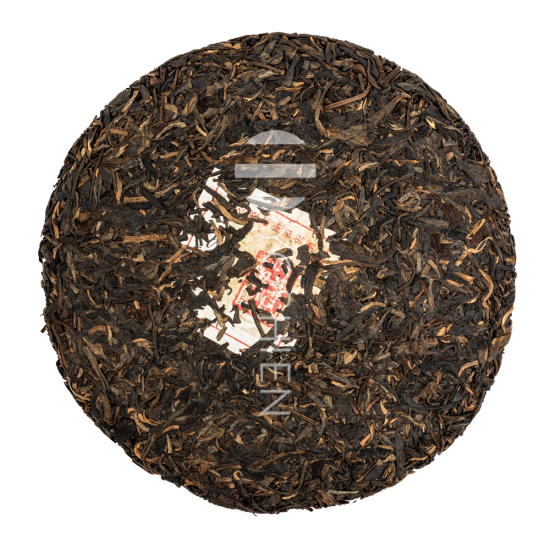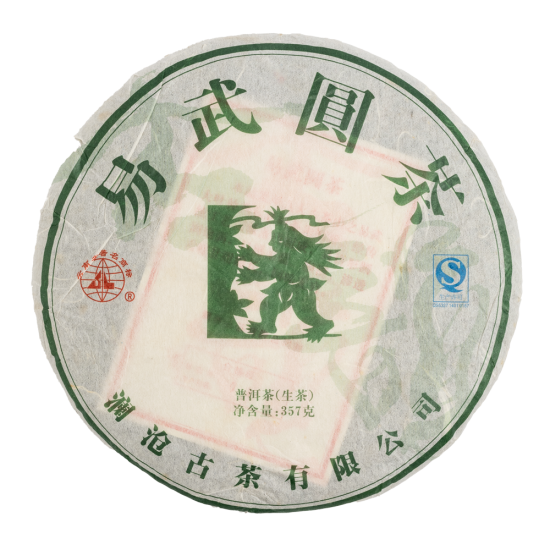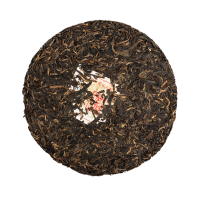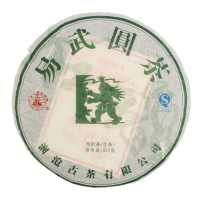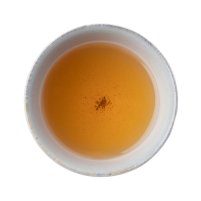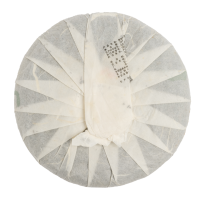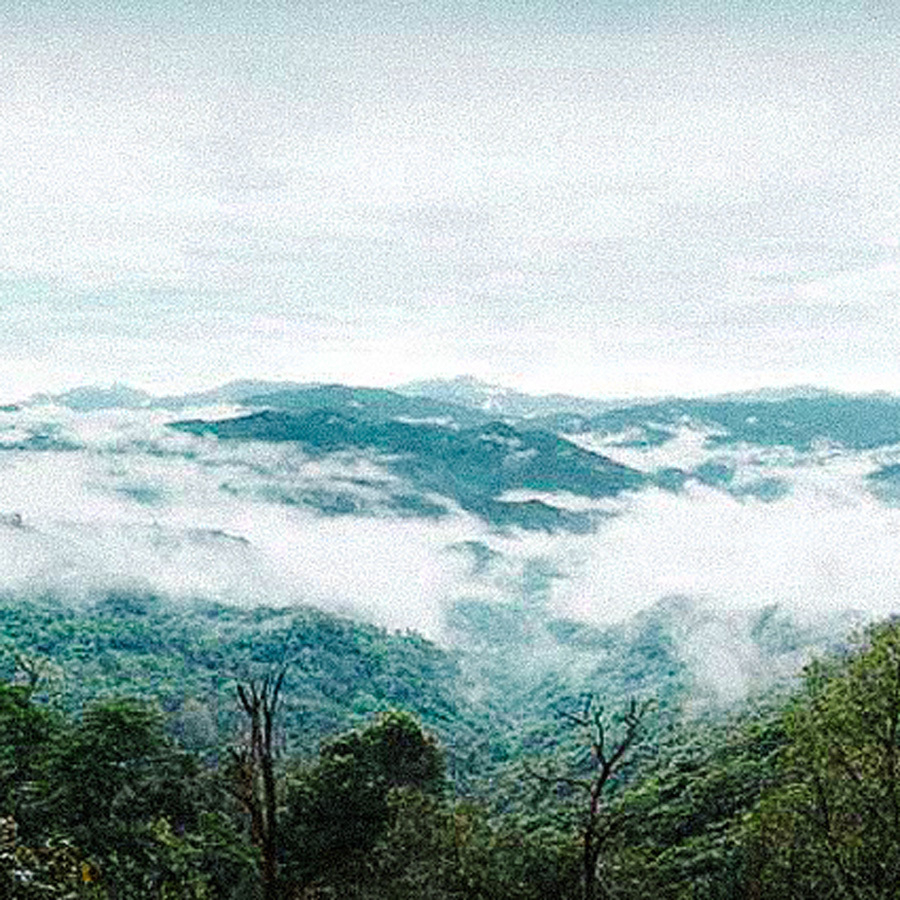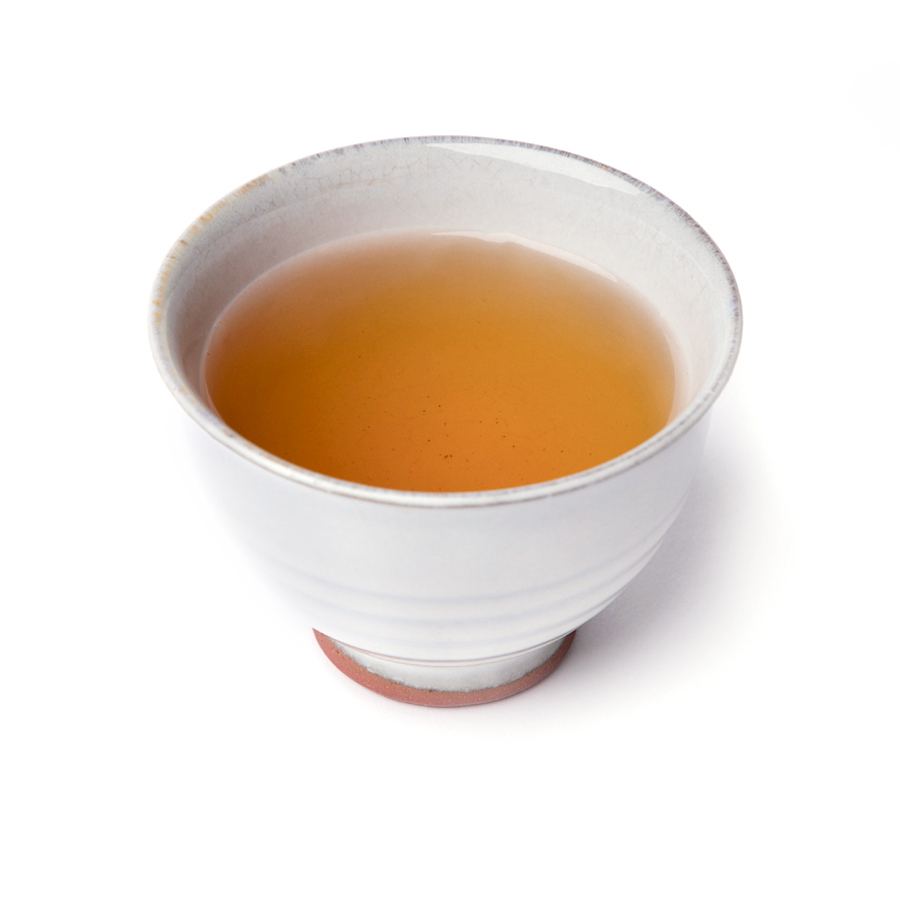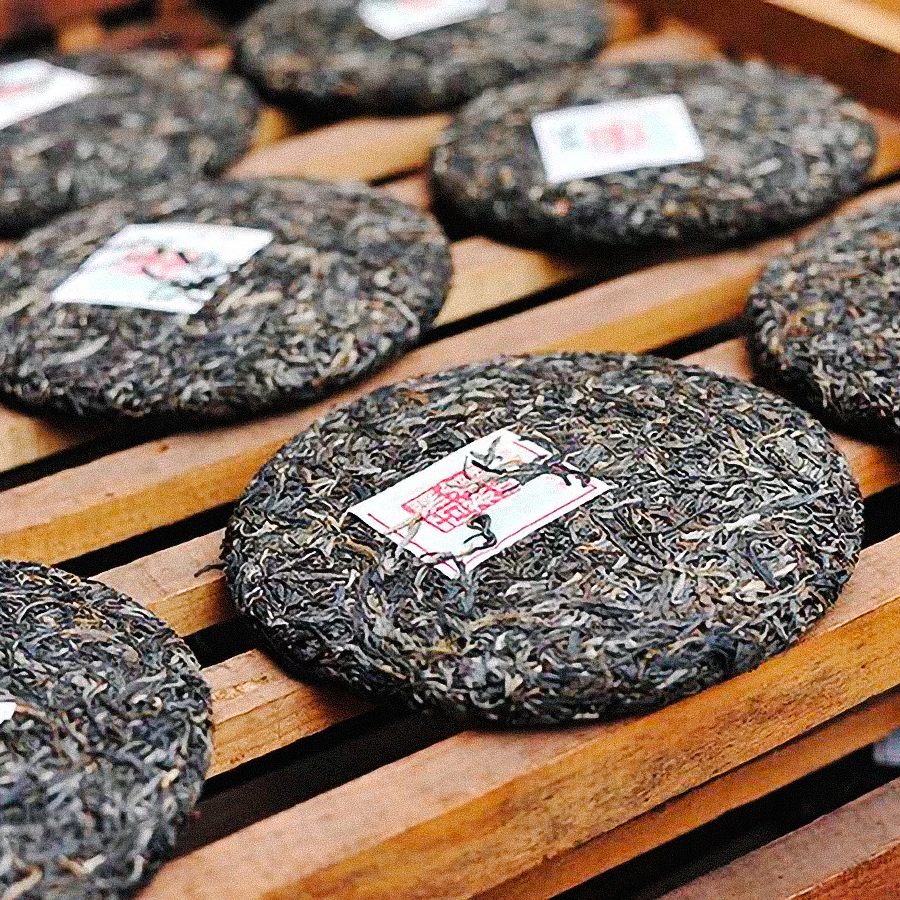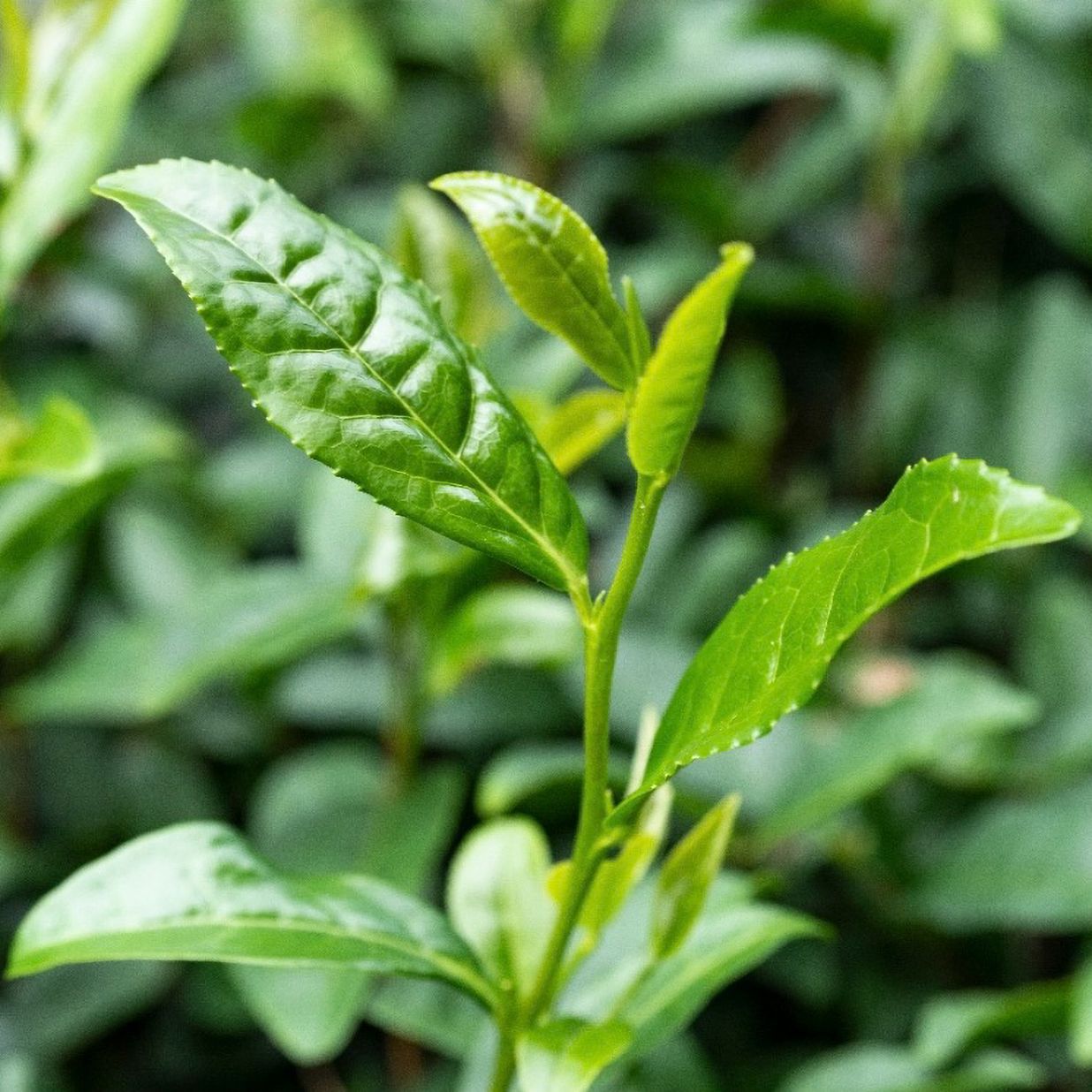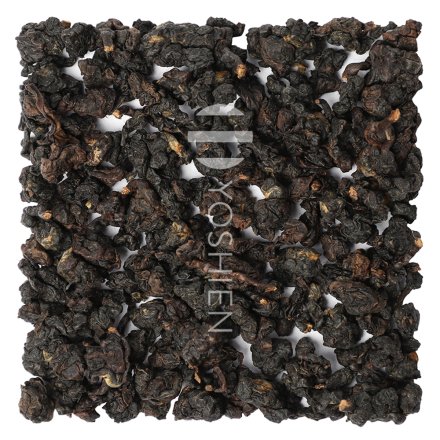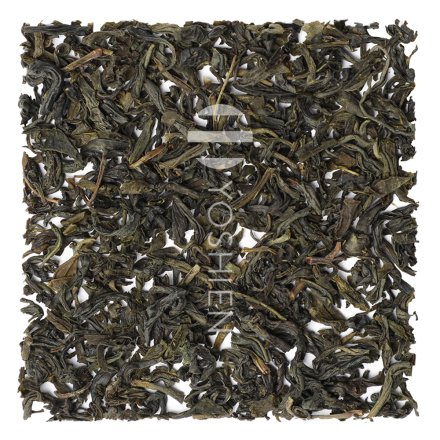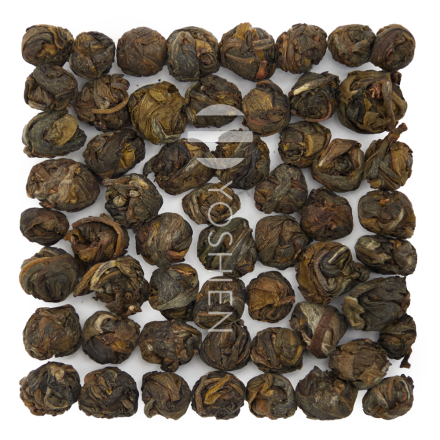The region of Yiwu is located in the deep south of Yunnan near the border with Laos. The lands for tea cultivation stretch from 800m to 2,000m in elevation. The weather is quite warm the whole year, and the winters are mild.
Pu Erh tea from Yiwu has a long history and was the first of all Pu-Erh teas in Yunnan to be delivered to the Emperor as a tribute. During imperial times, only the best teas were selected as tribute teas.
Although Pu Erh teas were largely neglected on the international market for many decades, Pu Erh teas from Yiwu were partially responsible for garnering the interest of tea traders in the early 2000s and kicking off a boom in Pu Erh tea sales.
Historically, the teas from all 6 famous tea mountains in Yiwu (Youli, Mangzhi, Mangzhuan, Yibang, Gedeng, Mansa) have had a very good reputation among Pu Erh connoisseurs.
Storage
This tea was produced in 2013 and stored for maturation in Guang Zhou, China until 2018. Since 2018 the tea has continued to be ripened under special conditions at Sunday Natural in Berlin.
Centuries-Old Pu Erh Trees
The tea plants needed for producing Pu Erh are autochthonous, large-leafed, and wild-grown tea plants. In contrast to generic tea plants grown around the world, this type does not grow as a bush, but rather as a tree that can live for up to thousands of years. Scientific study of the Camellia taliensis suggests that this tree is the common ancestor of all other types of tea. This cultivar is native to the region where China, Vietnam, Laos, and Myanmar meet. This is also where the Chinese province of Yunnan is located, and the history of Yunnan is also intertwined with the first known attempts to cultivate tea. For this reason, Yunnan is often considered the "cradle of all teas". In the tea forest of Yunnan, each tree has an individual character with a different shape and different cultures of moss and fungi. As such, each tree produces its "own" tea. The older the tree, the deeper its roots extend into the earth and into deep layers of rock and stone. These older trees can absorb minerals and trace elements that are passed on to the leaves and buds. The tea made from the buds and leaves of wild-grown older trees is thus rich in minerals and highly desirable.




